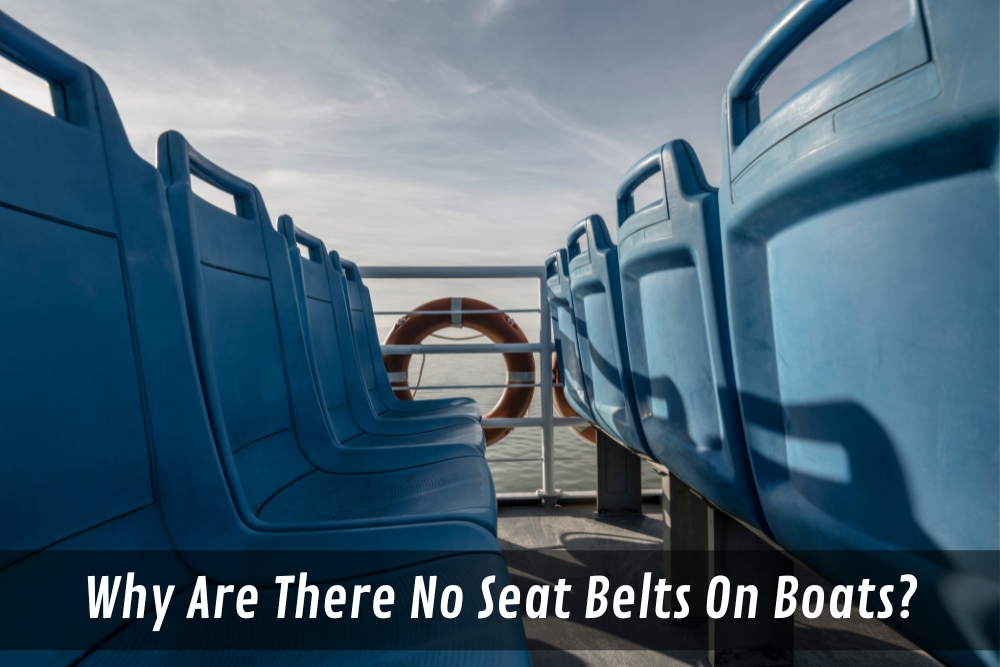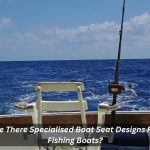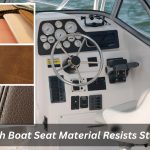Why Are There No Seat Belts On Boats?

Boat seat belts have been a topic of discussion among boaters and safety experts for many years. While seat belts are a common safety feature in cars and other vehicles, many people wonder why there are no seat belts on boats. After all, boating can be just as dangerous, if not more so, than driving on the road.
In this blog post, we will explore the reasons why boat seat belts are not mandatory in most places, as well as the pros and cons of using them while boating. We will also discuss other safety measures that can help keep boaters safe on the water. So, if you’ve ever wondered why there are no seat belts on boats, keep reading to find out!
What is the difference between boats and cars?
Boats and cars are designed for very different purposes and, as such, have some crucial differences. For starters, boats tend to move at slower speeds than cars. Which means there is less of a chance of injury in the event of a collision. Additionally, boats are typically operating on calm water or in sheltered areas with little wave action or other environmental hazards that can cause abrupt movement. This reduced risk of experiencing sudden acceleration or deceleration eliminates the need for seat belts on boats.
Furthermore, wearing a seat belt while on a boat can impair your ability to move around freely when needed. Boats require passengers to shift their weight and change positions depending on the current conditions to maintain balance and stability. Seat belts restrict this movement and can actually pose a safety hazard in certain situations.
Finally, there are laws and regulations that dictate what kinds of safety equipment boats must have on board. It’s ultimately up to the captain or owner of the vessel to decide whether or not to install them. Though doing so is strongly encouraged for extra peace of mind.
What are the different types of boats and their design considerations?
Boats come in all shapes and sizes, and each type of boat has its own unique design considerations.
- Small boats such as dinghies and canoes are lightweight, easy to maneuver, and require less power than larger vessels. They also have the added benefit of being able to be stored easily and transported on car racks or trailers.
- Larger vessels such as cruisers, sailboats, and yachts may require more powerful engines and additional safety equipment due to their size. Additionally, these larger boats often include amenities like cabins or bedrooms for extended trips away from the dock.
- Jet boats are designed for speed, with powerful engines allowing them to navigate shallow waters at high speeds.
- Finally, pontoon boats are known for their stability and are often used for leisurely activities such as fishing or sightseeing.
What are the laws and regulations surrounding the use of seat belts on boats?
In Australia, the laws and regulations surrounding the use of seat belts on boats are regulated by the Australian Maritime Safety Authority (AMSA).
According to AMSA, boat seat belts are not mandatory for recreational boats. However, the use of life jackets is mandatory for all passengers on board when boating in most Australian states and territories.
For racing boats, AMSA mandates that all occupants wear a personal flotation device or life jacket that meets the Australian Standard. Racing boats may also require the use of other safety equipment, such as a harness or helmet.
It’s important to note that the type of boat seat and design may impact the effectiveness of seat belts in the event of a capsize or boat flipping. In some cases, seat belts can actually hinder escape from a capsized boat. So, it is important to follow manufacturer recommendations. Also, consider the type of boat and boating conditions when determining whether or not to use seat belts.
Ultimately, the responsibility for the safety of the driver and passengers lies with the boat owner and operator. It is important to use a wide variety of safety equipment. Including life jackets and any additional safety equipment that may be required for racing boats.
What are the potential risks of using seat belts on boats?
The potential risks of using seat belts on boats are largely dependent on the type of boat and the conditions in which it is being operated. In some cases, seat belts can be a lifesaver in an emergency or when navigating rough waters. However, if not used correctly or if the wrong type of seat belt is used, they can actually be dangerous. Seat belts may limit mobility and make it difficult to move around the boat quickly or respond to changing conditions. Additionally, passengers wearing seat belts may be at risk of entanglement if the vessel flips or capsizes. It is important to always follow manufacturer recommendations for any safety equipment and to use good judgment when deciding whether or not to use seat belts on boats.
What are some alternative safety measures that boaters can take?
In addition to using a life jacket, there are other safety measures boaters can take to stay safe on the water.
- Participating in an approved boating safety course is one way to brush up on the latest safety tips and regulations.
- Other important safety tips include: checking the weather forecast before heading out, making sure all passengers know how to swim, and never boating alone or after dark. It’s also important to inspect the boat for potential hazards. Such as loose items or broken equipment before setting out on the water.
- Additionally, carrying a first aid kit and emergency supplies onboard is always a good idea.
- Finally, having an experienced companion onboard can be invaluable in an emergency situation. They can help monitor navigation and provide assistance if needed.
Overall, while seat belts may be beneficial in some situations, it is important to consider the type of boat. Also, the boating conditions and manufacturer recommendations before deciding whether or not to use seat belts on a boat. Taking the proper safety precautions and following best practices can help ensure a safe and enjoyable experience for all passengers.
If you are looking for additional safety measures for your boat, Sege Seats offers a range of innovative and affordable seating solutions to help ensure the highest level of comfort and safety for everyone onboard. With an easy installation process, adjustable lumbar support, and a variety of colours and fabrics to choose from, Sege Seats will make your boat journey safer, more comfortable, and more enjoyable. Speak with us today to find the best seating solution for your boat.





